Instead of barrel racers and bull riders, robots entertained the crowds at this rodeo.
Live demonstrations by automated farm implement companies on dusty rodeo grounds highlighted FIRA USA, the three-day agricultural technology conference and trade show in September in Salinas, California.
Onlookers lined fences to watch self-driving equipment from companies such as Agtonomy, GUSS and Naïo Technologies wind its way through simulated orchard and vineyard rows, as well as a live vegetable patch, while representatives of the companies touted their wares.
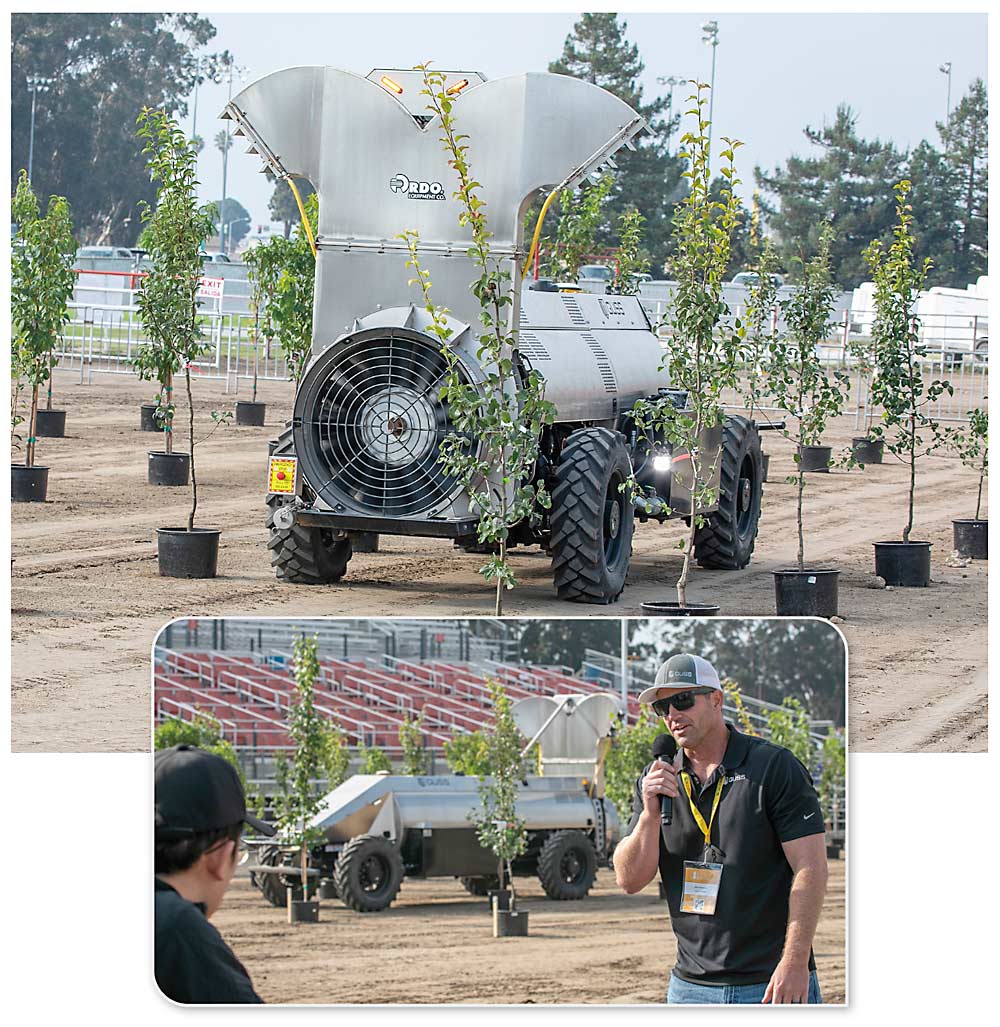
The demos took a lot of work by organizers, who planted live vegetables as much as eight weeks ahead of time and asked students at nearby Hartnell College to weld iron vineyards. But growers unanimously ask for demos, said Walt Duflock, vice president of innovation for Western Growers. The group helped organize FIRA, which debuted in Fresno last year with just one day of demos.
“The No. 1 request after Fresno was, ‘I want more of that,’” he said.
Of the 60 exhibitors at the show, 16 paid the extra fee to demonstrate. Good Fruit Grower focused on a handful that could lend themselves to the tree fruit or wine grape industries.
For example, tree fruit growers are eyeing Agtonomy, a Bay Area startup that automates existing equipment with factory-fit conversion kits that feature an array of sensors and computer vision. The company demonstrated a prototype, built onto a Bobcat frame, that pushed a mower attachment and towed a trailer with two empty apple bins.
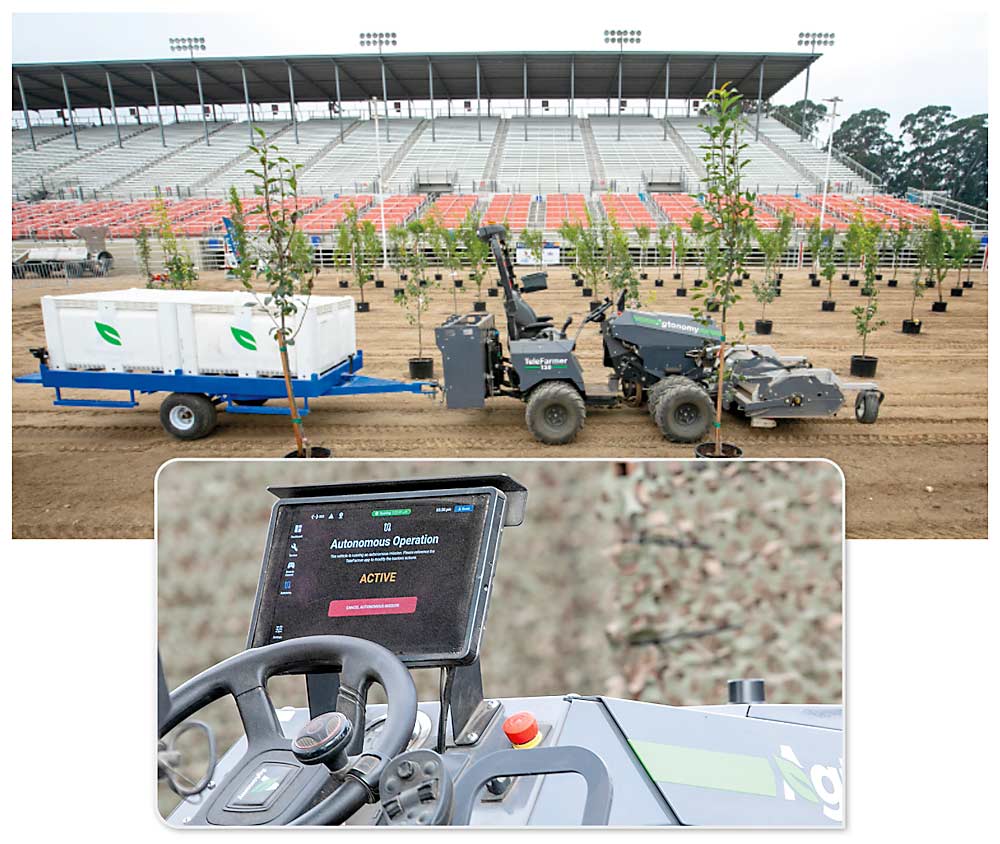
The self-driving tool is sized for narrow orchard rows and tight turns, which enables more efficient use of space when planting, said Scott Jacky, who works for Yakima-based orchard management company NWFM and is a member of the Washington Tree Fruit Research Commission technology committee.
Agtonomy also sells TeleFarmer, a proprietary software that serves as a control panel, labor tracking and planning tool. The company plans to bring prototypes to Washington for demonstrations and field days in 2024.
Another automated vehicle of interest for tree fruit is Prospr from Robotics Plus of New Zealand. The company estimates the diesel/hybrid engine reduces fuel use by 70 percent, while the individually powered wheels handle slopes up to 20 percent and rows as narrow as 6 feet.
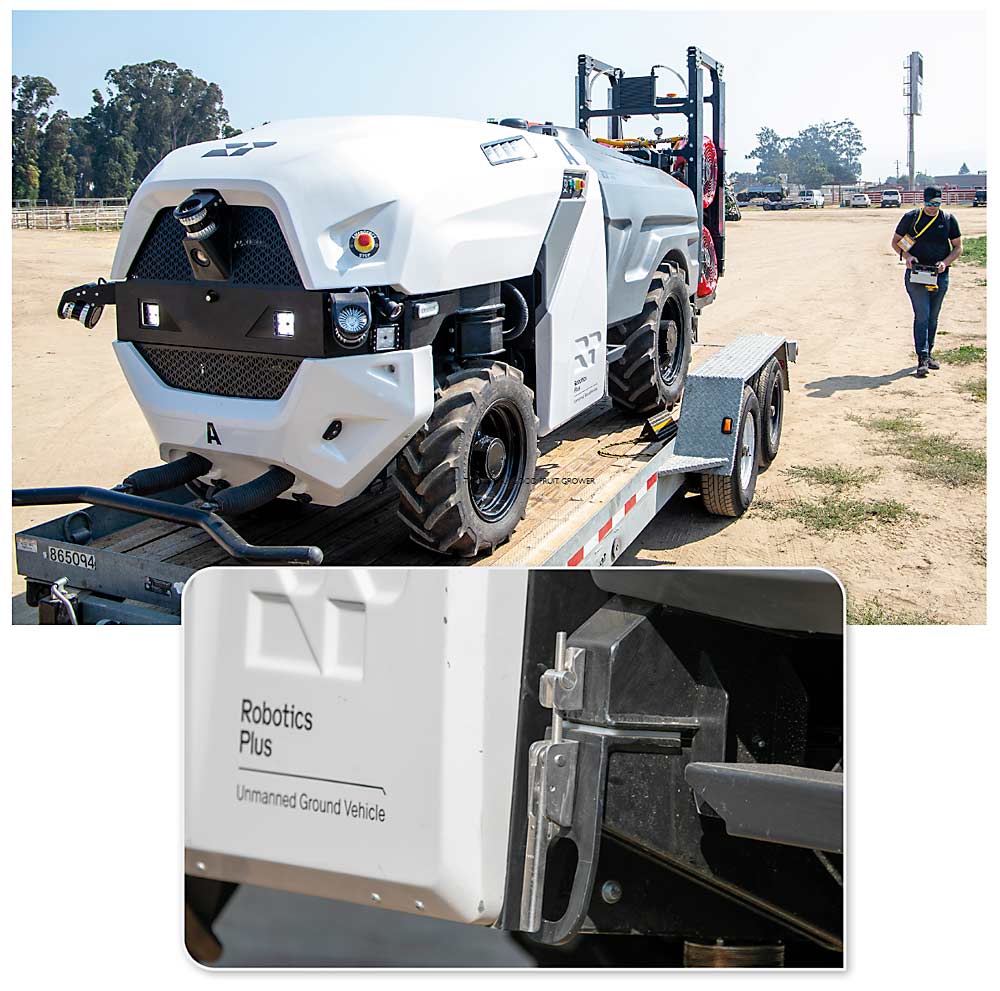
Engineers gave Prospr a modular design. Currently, a spray rig with tank and adjustable fans are the only available attachments, though leaf blowers and hedgers are coming soon, CEO Steve Saunders said.
Other demonstrations came from companies already pitching their products to the tree fruit and grape industries, including the autonomous sprayers from GUSS, the Monarch electric tractor, and tractors outfitted with Bluewhite’s autonomy technology.
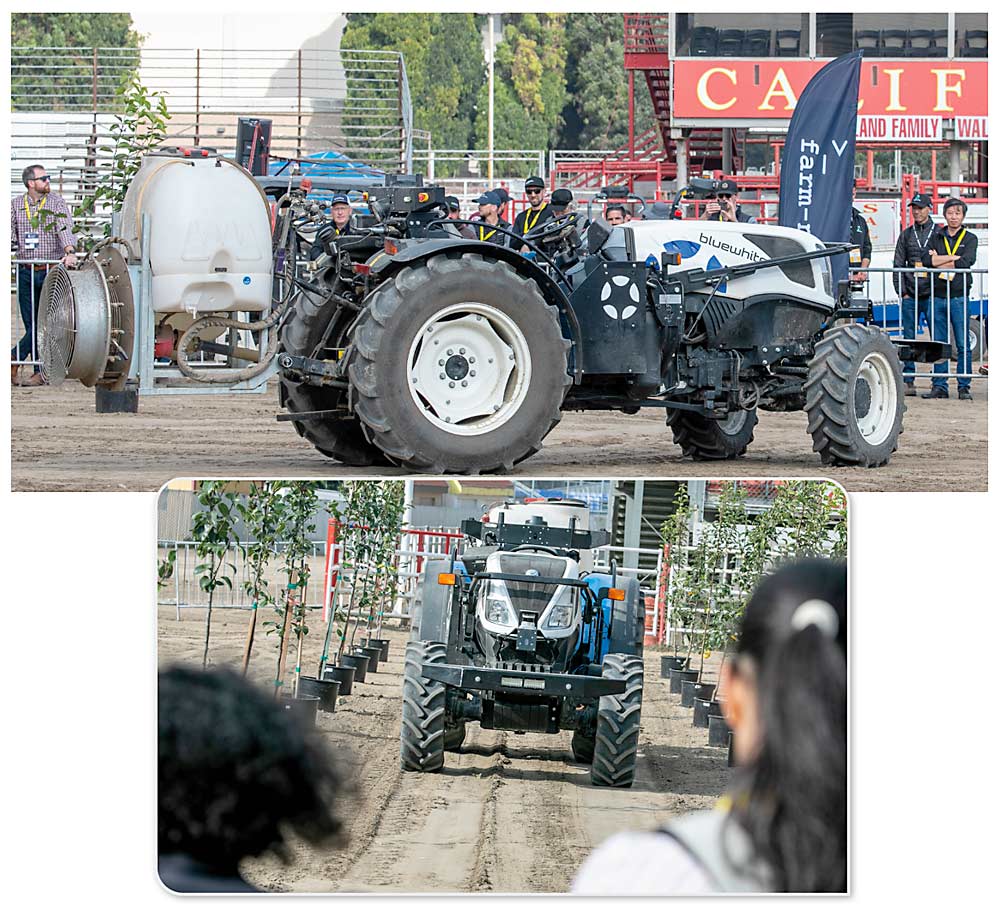
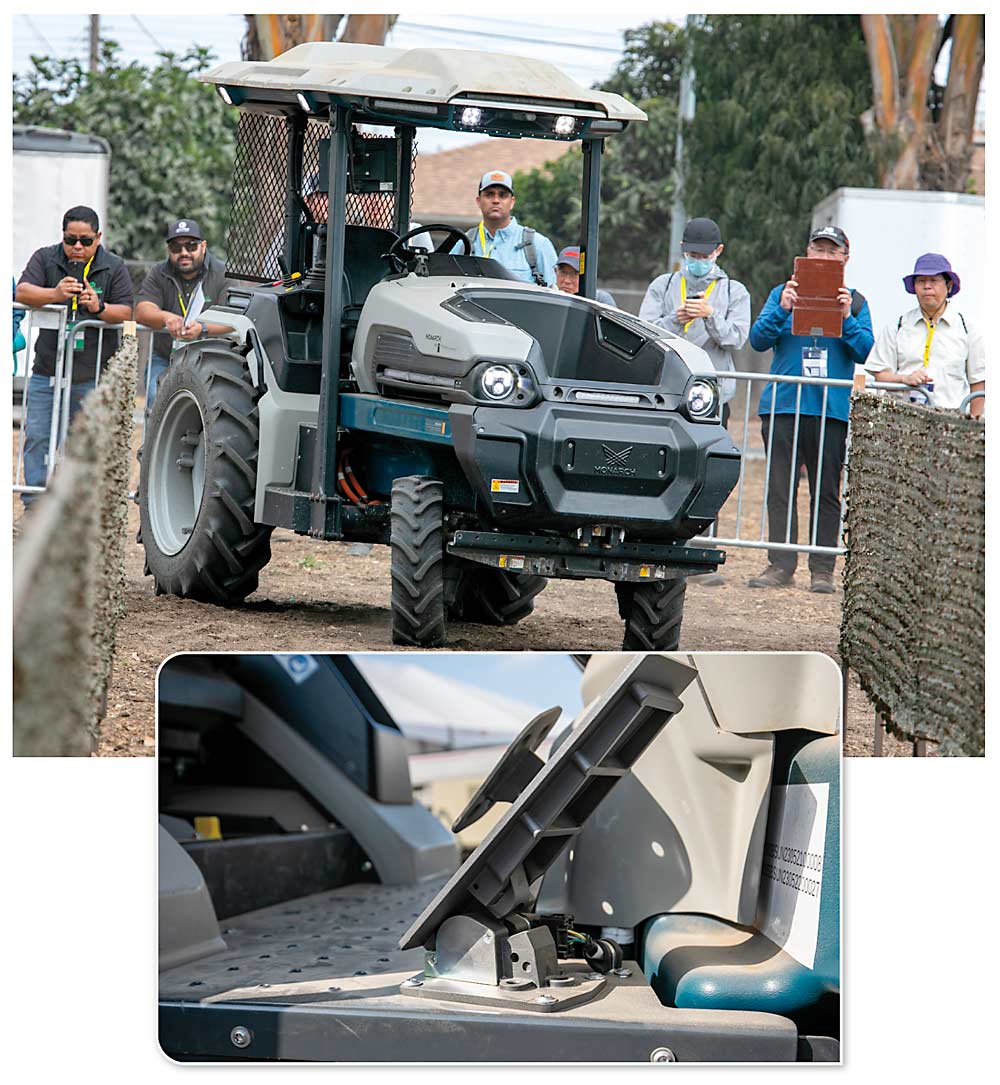
Burro, the automated cart-like vehicle that follows people or preset routes, also ran demos. The California company has successfully penetrated the table grape market but demonstrated the Burro’s new advanced tow pack that representatives said can manage up to 5,000 pounds for up to 12 hours on one charge cycle. Promotional videos at the startup’s booth showed it carrying totes of stone fruit.
Company reps also pitched the Burro as a platform to carry sensors for bloom or harvest mapping and produce tracking for food safety records.
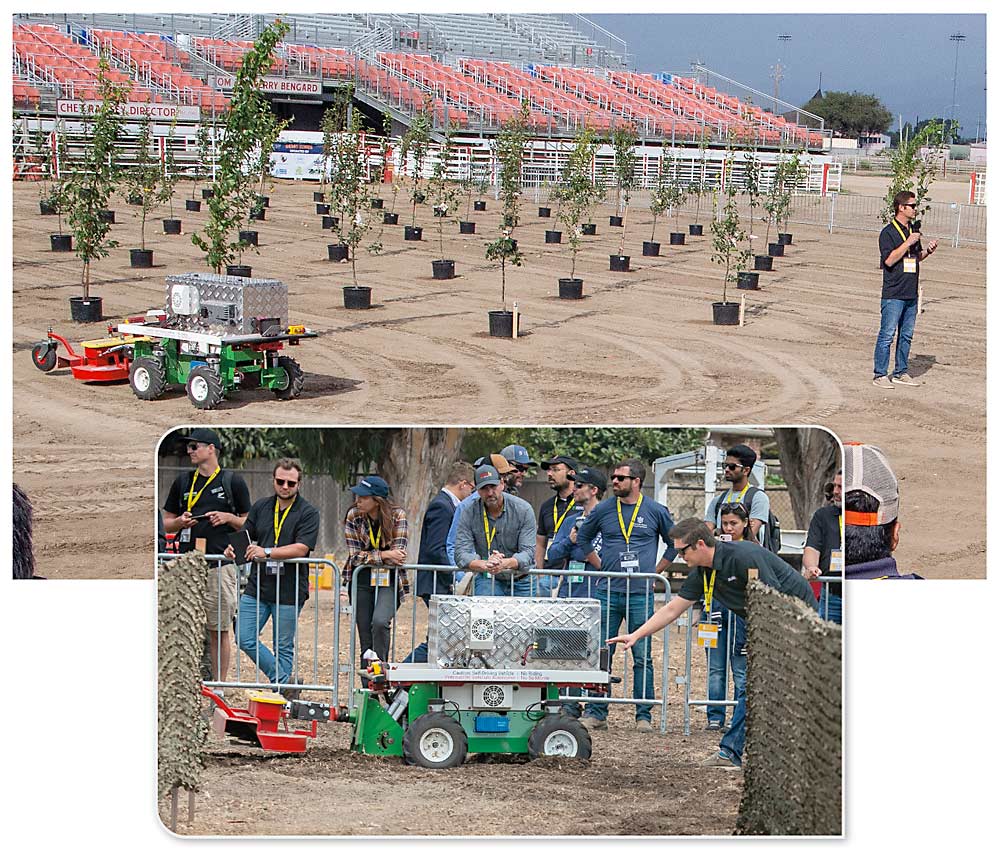
French company Naïo Technologies also demonstrated. The 10-year-old company makes four different battery-powered weeding machines, two for vineyards, two for vegetables.
One is called Ted, an over-the-row vineyard weeder that combines real-time kinematic GPS with simple mechanical components, such as a spring arm that folds back weeding attachments to protect the trunks. With the tool’s upside-down U standing at 6.5 feet, it serves vineyards but not orchards.
The company’s Jo is an autonomous tilling crawler, also designed for vineyard rows.
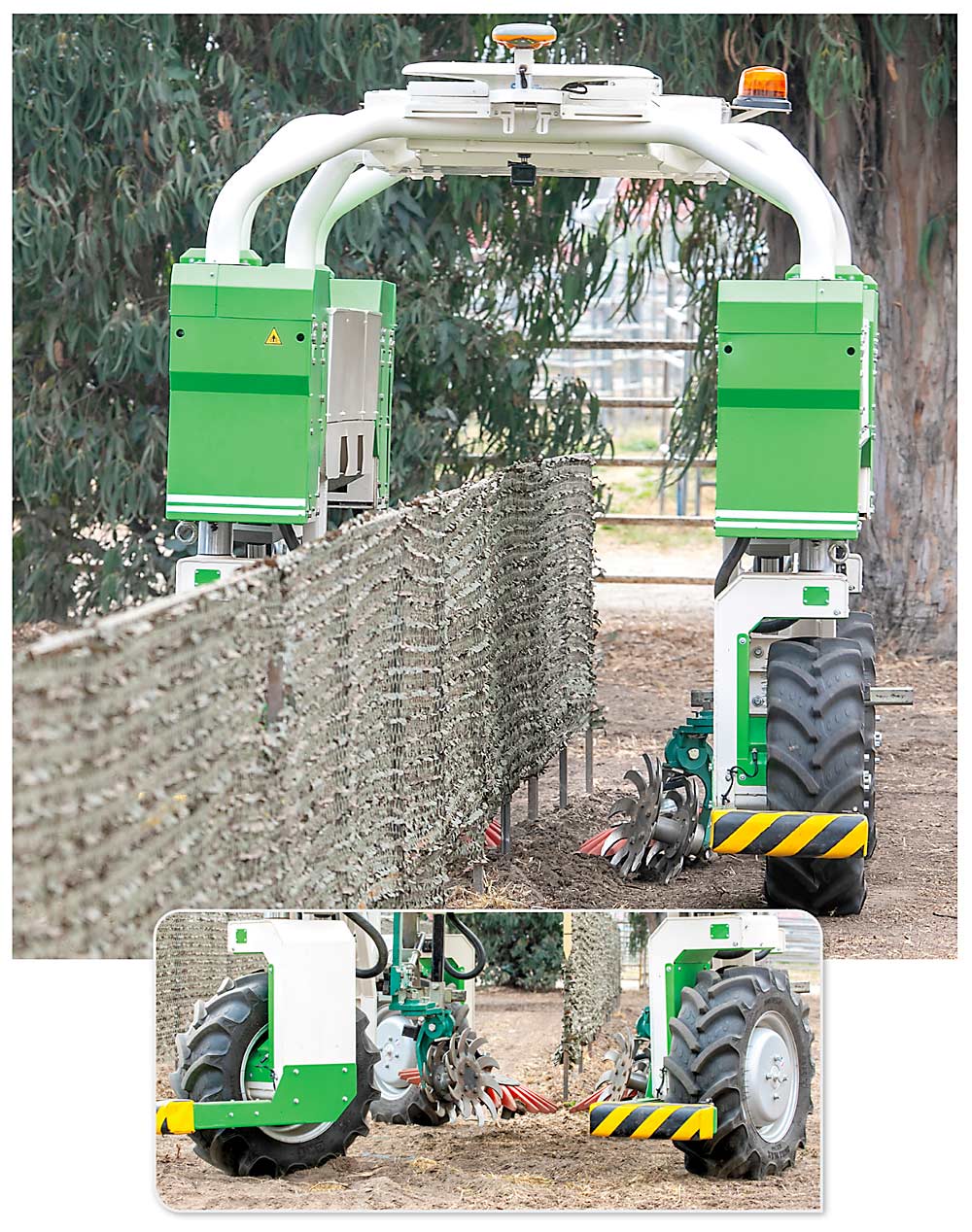
So far, the company has commercial vineyard clients in Europe and California and is discussing dealership arrangements with Washington companies, said co-founder Gaetan Severac.
The company also is eyeing tree fruit. Severac declined to discuss specifics, but like many tech startups, Naïo designs its equipment to accept a variety of attachments for future tasks, such as pruning, harvest or mowing.
“We are going step by step, but we will deploy and increase the range of robots to address all the different kinds of agriculture,” he said. “So, it’s coming. It’s coming.”
—by Ross Courtney






Leave A Comment